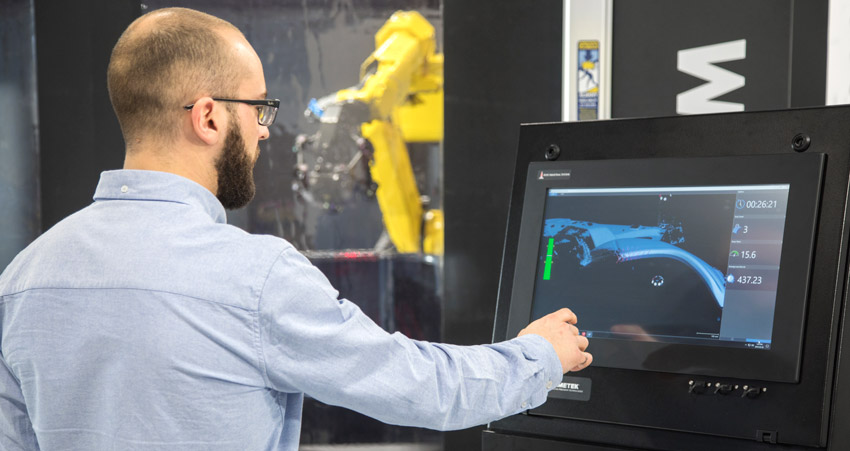October 24, 2024
3 Simple Tests to Recognize High-Quality 3D Scanners with no Calibrated Artifacts Required See the articleOver the past few years, global manufacturing industries have come up with more complex part and assembly designs to address hypercompetitive markets. However, in the long run, it requires more advanced quality control processes.
What causes bottlenecks?
Often, quality control inspections are performed in a room isolated from the production floor where temperature and humidity variations and vibrations are limited. Quality control experts must take samples from the production floor to the quality control lab to perform CMM dimensional inspection. These part movements have several major negative impacts. For one, it requires a considerable amount of time and effort to move the parts back and forth from the production line to the lab, often creating unmanageable bottlenecks at the various measurement stations and extended delays in decision-making.
What are your main productivity issues
on your automated quality control process?
Speed, Labor,
Complexity
Inspection on the production line
To mitigate these issues and along with the increasing implementation of Industry 4.0, manufacturers are requiring that quality control inspections be conducted right on, or very near the production line to maximize efficiency and streamline communication throughout their entire manufacturing processes.
As a result, there has never been a greater need to perform dimensional inspections within the production cycle using automated near-line or in-line metrology solutions.
If inspections are carried out on production lines, the inspection pace must follow the production pace to avoid affecting productivity. A stop of production due to inspection bottlenecks cost a lot of money. Therefore, the return on investment of an automated quality control solution is very high.
Solution: 3D Scanning
Thanks to new technology and advances in science, manufacturers are using next-generation 3D scanning solutions with unprecedented data acquisition speeds of up to 500K points/second and faster mesh generations. A mix of high-performance cameras and computer components helps to increase data acquisition and processing speeds. To outperform individual computer performance, research, and development teams are now developing cross-computer systems to process data simultaneously on multiple CPUs. This form of parallelization allows the separation of the data acquisition from the surface generation. In other words, 3D scanners are now multitasking machines, providing a solution that can scan parts continuously, faster than ever. Scanners can even adjust their settings during the scan process to optimize surface acquisition according to different textures and colors. This is a major enhancement since we can scan shiny black and matte white surfaces on the same part.
Increasing Automated Inspection Productivity
By using 3D scanners, quality control teams can perform more automated inspections per hour. Problems, defects, and irregularities can be detected earlier for immediate or future actions. In addition, equipment maintenance and corrective measures in the manufacturing process can be identified and planned in advance. With the possibility to be connected directly with production databases, the information can be automatically synchronized to save even more time.
In short, the number of default parts that must be rebuilt decreases, the rate of discarded pieces compared to manufactured parts also decreases, and more parts are manufactured and sold with the same amount of raw material. Again, the return on investment is obviously a winning factor with this kind of solution.








